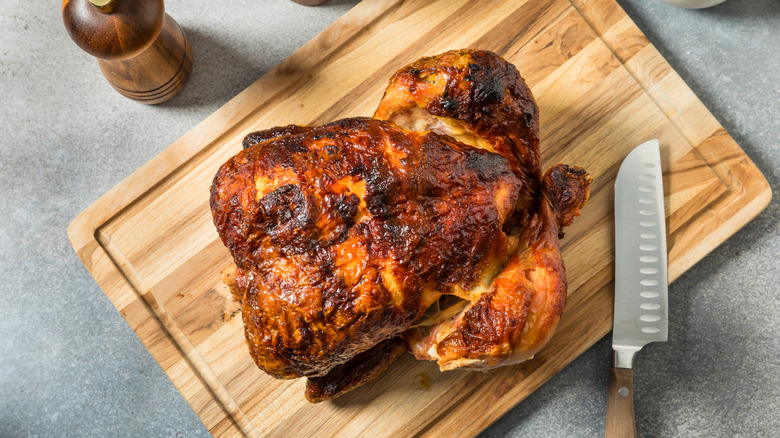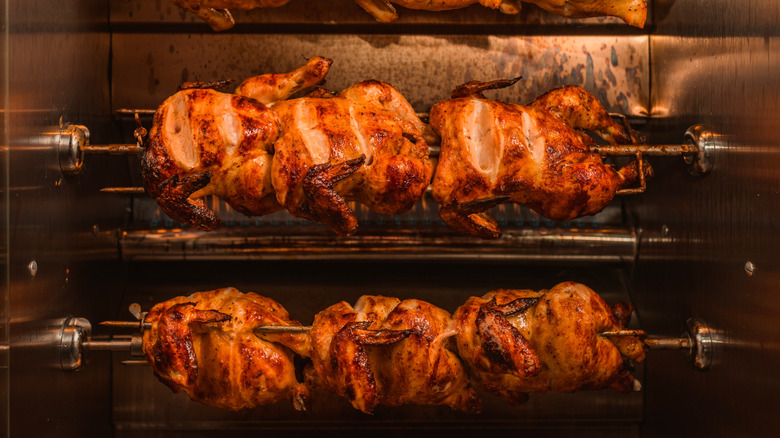The Packaging Red Flag That Should Keep That Rotisserie Chicken Out Of Your Cart
A tasty, hot rotisserie chicken from the right store can be the perfect end to even the toughest of days. When picking one up, pay close attention to the packaging. If it is in any way damaged, it's best to look for an alternative.
However, it's important to distinguish between damaged contents and damaged packaging. If your bagged rotisserie chicken takes a hit and the chicken itself breaks apart, it is still most probably safe to eat — not as aesthetic, but safe. So long as the chicken looks normal, and if you can verify the damage was very recent, there should not be much risk to the food. If, however, the packaging itself tears, this can lead to a host of health concerns, and it should stay out of your cart. Airtight packaging is crucial to maintaining freshness, so any compromise to this can risk cross-contamination or accelerated degradation.
If your chicken is stored in a bag, check for tears or holes. If any juices or moisture escape, this is a strong indication that the packaging is compromised, even if there are no observable breaks. In boxes, check for any holes or cracks along the plastic. Cracks may seem minor, but they can just as easily allow bacteria inside and spoil your food.
Another thing to watch out for is the temperature. Your poultry should be hot at the time of purchase, so make sure the chicken was kept on a heated shelf. Once the rotisserie chicken starts to cool down, the risk for bacteria increases. Sure, airtight packaging is important, but it's vital that your meat stays out of the danger zone — 40 to 140 degrees Fahrenheit. If the meat has started to cool, then an airtight seal would only serve to keep the bacteria inside.
Keep rotisserie chicken safe
Costco's famous rotisserie chickens have an equally famous shelf life. Each package is time-stamped, and after two hours, it is taken off the shelves and repurposed for other meals. This policy helps maintain a high quality and reduces the risk of the chicken or the packaging degrading. When you buy one, it's best not to dally. Chicken should not be left out for more than a couple of hours in the danger zone. Even when sealed well, there isn't much leeway with this timeframe. For this reason, it's best to grab your rotisserie chicken towards the end of your shopping.
Once you know your rotisserie chicken is free of the biggest red flags, try to eat it as close to the time of purchase as possible. If you have a few hours before mealtime, keep your chicken in the refrigerator until you're ready. It's best to keep it in its original packaging to minimize the risk of cross-contamination. For any leftovers, wrap them well in plastic or in an airtight container and store them in the fridge. Reheating should be quick, but make sure it reaches an internal temperature of 165 degrees Fahrenheit to prevent foodborne illness. You can also freeze your leftover rotisserie chicken for up to three or four months, but make sure to consume it within a day of thawing.


